Вы здесь
Mean-baba mausoleum.

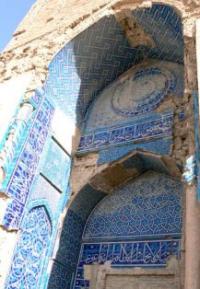
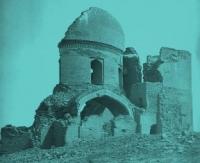
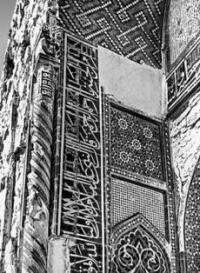
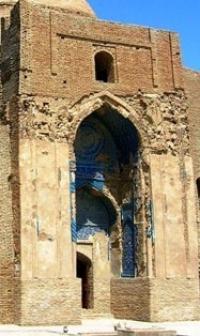
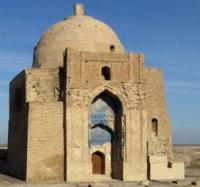
According to the decree of the President of Turkmenistan Gurbanguly Berdymuhamedov on November 13 - 15 of 2007 in Ashkhabad was held the International Scientific Conference “Abusagyt Abulhayr – the great thinker of the East”, on which also questions of studying and preservation of the mausoleum of Meana-baba was discussed.
Meana-baba – so names local population the mausoleum, erected above ashes of the known Muslim religious figure of the Middle Ages of the Speikh Abusagyt Abulhayr, living in the X-XI centuries.
The mausoleum is located approximately in 40 km to the south-east of the settlement Dushak of Ahal area of Turkmenistan and during all XX century remained object of research from the part of orientalists, archeologists, historians of architecture and arts critics, and last years it is one of popular tourist objects.
The mausoleum has been constructed in the XI century, and in the XIV century on it works on capital reconstruction have been carried out. The monument is the product of masters of Serahs architectural school prospering in the XI - XII centuries when these territories were the part of the Turkmen-Seljuk state.
In many regions of Turkmen-Seljuk Orb receive development large building corporation and even independent architectural schools, developing distinctive style direction in architecture have arisen.
One of such schools was Serahs architectural school, bringing up a galaxy of brilliant masters. In art products of architects of Serehs school are concentrated a technical ingenuity, clearness of a composite plan, indissoluble unity of the whole and details, simplicity and harmony of a décor.
But the invaluable contribution of masters of this school to the world architecture is creation of a two-layer dome design. Namely in their products for the first time there is a dome with a double shell.
The certificate to that are the kept architectural monuments of this school: Mausoleums of Abu Sayid in Meana, Abul-Fazi in Serahs, Lukman-baba in Iranian Serahsc, Al-Gazali in Tusa and certainly the mausoleum of sultan Sandjar in Merv, constructed by talented architect Mohammed ibn Atsyz as-Serehsi.
Medieval Khurasan has presented the world the galaxy of remarkable scientists and hearers, poets and artists, theologians and philosophers, whose names today are known far outside the Central Asia.
Also here lived known sheikhs-followers of suphizm – mystic-ascetic doctrine in an Islam among which one of large figures is Abu–Sayid Abul Hayr. He was born in the family of the druggist presumably in 968 year in the city of Mehne where has received an elementary education, then was trained at the well-known theologians of Merv.
In the beginning of 1020 years Abu-Sayid, having received from the known ufi of that period the certificate about achievement of a maturity in knowledge of suphixm, has opened in Nishapur his own sermons, as well as discussions about life and mysticism.
The history has kept one of such discussions which has taken place between the Sheikh and Abu Ali inb Sina when in Nishapur the roads of ese two so not similar titans in the sights of “the Muslim Renascence” were crossed.
In contrast to Abu-Sayid, being by his ideas and spirit in the other world, Avicenna was the supporter of the scientific facts. After the long debate touching laws in the nature and divine predetermination, on a question of pupils concerning impressions from conversation with Abu-Sayid, Avicenna answered: “He sees that I hear”.
Growing popularity of Abu-Sayid did not allow rest to local-the zealous supporters of an orthodox Islam. They organize a denunciation to Gaznevid sultan Magmud, that in Nishapur there is the person from Mehne who calls himself as Sufi, but by his sermons, ostensibly confuses devout.
But at investigation all inconsistency of this denunciation was found out. However, Abu-Sayid comes back to Mehne. He has founded hanaka which always was full by supporters of Sufi interpretation.
Here, to a monastery of the sacred sheikh aspired dervishes from all places of Khurasan. In the meantime, in Khurasan events which in a consequence render strong influence to the history of all Near East and Middle East, including Transcaucasia and Asia Minor are development.
The discontent among the population of Khurasan opperessing taxation from the part of Gaznevids grows. Oguz-Turkmen tribes the first refuse to pay taxes to sultan treasury. Between them and Gaznevids the direct opposition begins.
Oguz-Turkmen army under the leadership of descendants of Seljuk – the brothers Togrul and Chagry, in the flight which was taken place in 1040 near the city of Dandanakan, totally have defeated the basic forces of Gaznevid sultan Masud and completely gain Khurasan.
For benediction to their legitima potestas the brothers Chagry and Togrul go to that monastery on surburb of Mehne to aged man Abu-Sayid Meyheneyskiy, that once again confirms, what huge reverence the sheikh among the population of Khurasan used.
Under the message of chronicler Mohammed ibn al-Munavvar Meyheni, the brothers, having lowered a head, then has lifted eyes and has told Chagry: “We give you power of Khurasan”, and told to Togrul: “We give you power of Iraq”.
Then Turkmen-Seljuk army started the more victoriously procession from Middle East, resulted to formation of huge empire which long time by the dynasty of Great Seljuks opered. Sultans of this dynasty remembered and honoured Meyheneysk aged man, who has blessed the sultan of Selzhukids Togrul-bek and his brother, the governor of Khurasan, Chagry-bek for the state and military affairs.
Sheik Abu-Sayid Abul Hajr has died approximately in 1049 in the monastery on the surburb Mehne where was buried. Numerous pupils and followers of the Sheikh have erected the mausoleum above his tomb becoming the important place of pilgrimage.
Even well-known vizier Melik-Shah Nizam al-Mulk during his long term traveling to Merv has visited Mehne and to Bow before Abu-Sayid. The great care for mausoleum of Meyheneyskiy aged man was shown by Seljuk sultan Sandzhar considering, that “Mehne is the blessed place and is not present a place greater and high, than a tomb of the sheikh”.
The subsequent turn of distempers and wars influenced Khurasan, including catastrophic fires and pogroms of Mongols, has not caused big damages to mausoleum of Abu Sayid.
On the contrary, in spite of the fact that dynasties of governors were replaced, the state repartitions of the ground were carried out, the centers of a political and cultural life for thousand kilometers from deserted small town Mehne were transferred, the mausoleum of sheikh Abu-Sayida Abul-Hair remained object of special reverence, as on the part of the population, and ruling elite.
About it eloquent testimony traces of infinite repairs and even capital reconstruction which realization was possible only at support of the dominating person. Around of the mausoleum the whole complex of construction which realization was possible only at support of the dominating person.
Around of the mausoleum the whole complex of constructions of various functional assignment, intended for service of a infinite stream of pilgrims grows. However in the course of time small rivers Meana and Chacha are exhausted up to such degree, that the population of once blossoming oasis starts to abandon familiar sports.
Because of full deficiency of water it appears left also the city of Mehne. Unfortunately, today the historical science has no sufficient data about town-planning culture and last days of a life of this city.
It is like erased from the ground. And only separate hillocks, appearing on a lay of land, hint that here, probably, once there were structures. Even the buildings once entering in to a complex Meana-baba, either lay in ruins, or have at all disappeared.
And only mausoleum of Sheikh Abu-Sayid Abul-Hayr carefully supported by local population alone towering in steppe, and, as if preserved by soaring spirit great aged man, having gone through centuries, continues to draw to itself pilgrims, tourists and travelers from many ends of the world.
Authority:
The Chief of the National Management on protection, studying and restorations of monuments of a history and culture of Turkmenistan Mamedov M.A. “Tourism and Sport” №1







